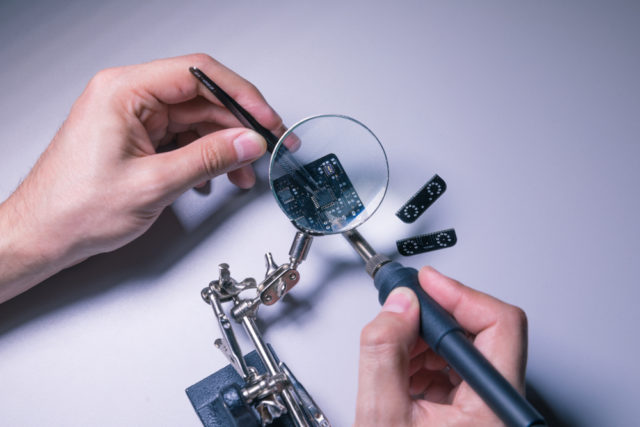Altering the Heart of the Digital Age: Exploring Doping Techniques to Boost Silicon’s Semiconductor Properties
At the heart of the digital revolution lies the humble silicon atom. The fourth most abundant element on Earth, it forms the backbone of the ever-evolving semiconductor industry. However, pure silicon is not inherently equipped for the intense demands of our digital age. The real magic begins when we ‘dope’ it – an intricate process of atomic manipulation that enhances silicon’s semiconductor properties. This article takes a deep dive into the world of silicon doping techniques, which have become integral to creating the cutting-edge technologies that power our world.

Why Dope Silicon?
Pure silicon, a semi-conductor, sits at the border between conductors like copper and insulators like rubber. While this characteristic makes it desirable for the semiconductor industry, it’s not sufficient on its own. To fully harness its potential, we need to fine-tune its electrical properties. That’s where doping comes in. By introducing a controlled amount of ‘impurity’ atoms, we can dramatically increase silicon’s electrical conductivity and create n-type or p-type silicon.

N-type and P-type Doping
In the world of doping, there are two key players: n-type and p-type dopants.
- N-type Doping: To create n-type silicon, pentavalent elements like phosphorus, arsenic, or antimony are added. Each of these atoms contributes an extra electron that is free to move and conduct electricity. Hence, the silicon becomes negatively charged, earning it the term ‘n-type’.
- P-type Doping: On the other hand, to produce p-type silicon, trivalent elements like boron, gallium, or indium are used. These atoms lack an electron, resulting in the creation of ‘holes’. These ‘holes’ can move around, behaving like positive charges, hence, the silicon becomes positively charged, or ‘p-type’.
Doping Techniques
There are numerous techniques used to introduce these dopants into the silicon lattice, but we’ll focus on the two most commonly used ones: Ion Implantation and Diffusion.
- Ion Implantation: This technique propels dopant ions into the silicon lattice using an electric field. The ions are accelerated to high speeds and then targeted at the silicon wafer. The depth to which the ions penetrate is controlled by their energy levels. Ion implantation provides exceptional precision and control over the dopant concentration and distribution, which is vital in modern semiconductor manufacturing.
- Diffusion: In the diffusion method, the silicon wafer is exposed to a dopant-rich gas at high temperatures. This induces the dopants to diffuse into the silicon wafer. While diffusion offers less control than ion implantation, it is a simple and cost-effective technique that has been instrumental in semiconductor manufacturing for decades.
Conclusion
Silicon doping, a cornerstone of the semiconductor industry, is an elegant blend of physics and chemistry, a dance of atoms that has been perfected over the years. As we stand on the cusp of the semiconductor’s golden age, understanding these doping techniques will help us appreciate the intricacies that transform the ubiquitous silicon into the driving force of our digital reality.




Comments are closed.